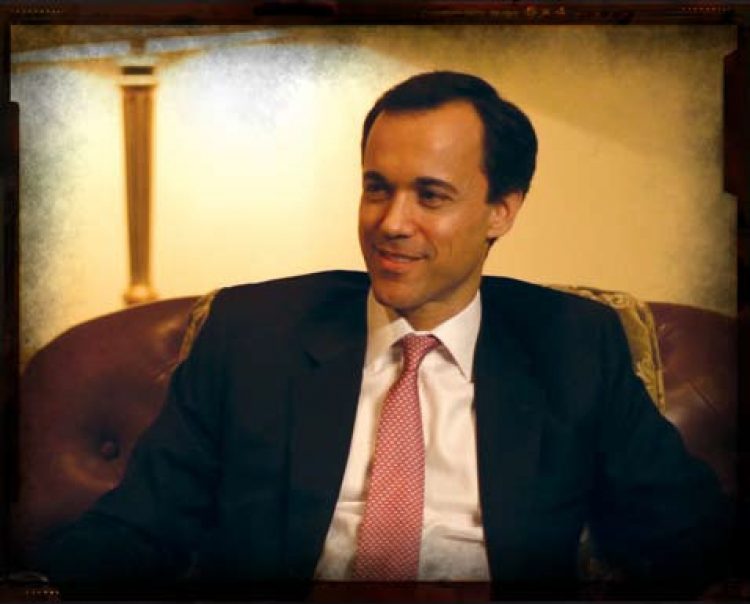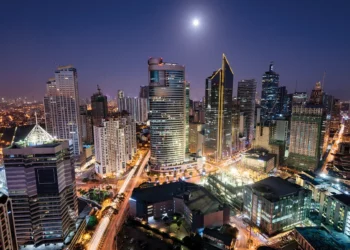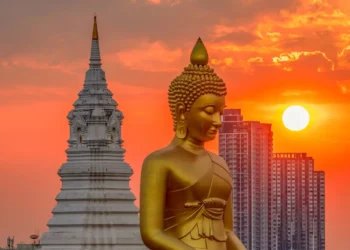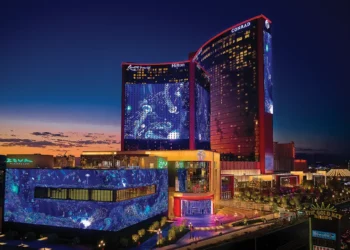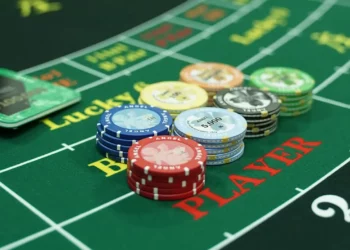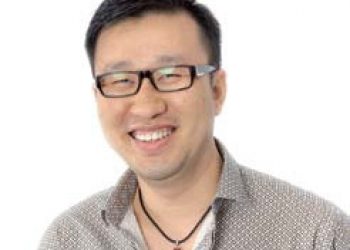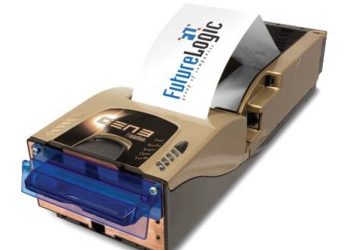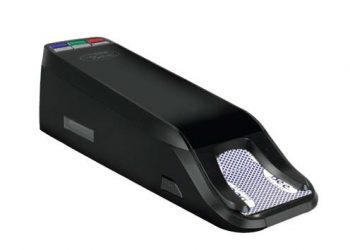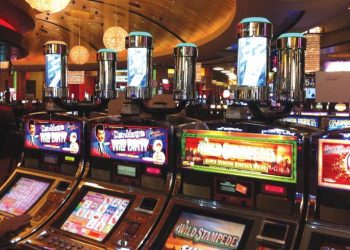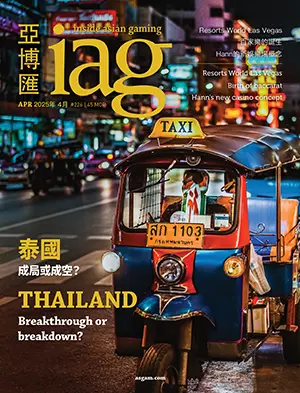The latest installment of Inside Asian Gaming’s video interview series with leading members of the Asian gaming industry features Lloyd Nathan, CEO of Asian Coast Development (Canada) Ltd, the owner and developer of the soon-to-open Ho Tram Strip in southern Vietnam. Mr Nathan discusses the project’s scope and potential, and answers skeptics who claim that Ho Tram is too difficult to get to
Hardly a week goes by without someone stepping forward to claim they are developing a casino resort in Vietnam. Only one company really is, and that’s Asian Coast Development (Canada) Limited (ACDL) at the Ho Tram Strip. This prime beachside location in southern Vietnam is around 127 km southeast of Ho Chi Minh City and its population of 10-12 million—though as the law currently stands, Vietnamese nationals will not be allowed to use the casino facilities unless they hold foreign passports or foreign residency permits.
Two years after taking over the reins of ACDL, Lloyd Nathan is close to realizing the first phase opening of the previously stalled Ho Tram development. That first phase, under the branding of MGM Grand Ho Tram, is due to open in Q1 2013. The ultimate vision is for five resorts along the 2.2 km coastal strip, bordered by a championship golf course, and featuring a full range of retail, dining and conference facilities.
Phase one will also feature a 13,600-square-meter casino with 90 live table games and 500 electronic games, as well as a five-star hotel with 541 rooms. Sources spoken to by IAG have given conflicting accounts of gaming tax rates in Vietnam, but a consensus is that mass-market play is taxed at approximately 30% and VIP trades at under half that amount.
There is talk of two other consortia building two further IRs in Vietnam. One on the central coast near Da Nang, and one on the northern coast at Halong Bay. So far there’s been no action. So although there’s no clarity yet on whether the Vietnamese government is going to open up the market to domestic players, it does seem that the Ho Tram Strip will be the only IR project within the country for at least several years to come.
ACDL also has real backers. A syndicate of Vietnamese banks is providing the debt. The equity has come from New York based Harbinger Capital Partners and the US regional casino operator Pinnacle Entertainment, which in August last year took a 26% stake for US$95 million.
Inside Asian Gaming Publisher Kareem Jalal visited the Ho Tram site with Lloyd Nathan last month, and saw interior fit-out had already begun on the rooms in the first phase hotel tower. Following the site tour, Mr Nathan sat down with Mr Jalal for a video interview, which can be viewed on the IAG website, staging.staging.asgam.com. The full transcript of the interview follows.
Kareem Jalal: How did you get involved with this project?
Lloyd Nathan: Initially, I was President of Global Gaming Development for MGM based out of Hong Kong. I had a 20-year history with MGM, and we were looking to expand our footprint in Asia at that time. We were building the casino in Macau. It was 2007, that it actually opened. In looking at the Vietnamese market, there were a number of people who claimed that they had a license, and eventually it led us to a company called Asian Coast Development. We signed a management and branding agreement to brand the first of five resorts for Asian Coast. And then, really, I went on my way. We had plenty of other development projects that we were looking at.
About two years later, the company approached me and asked me if I would be interested in being the CEO. They had approached a number of parties. I threw my hat in the ring, and here we are today.
You were taking over from your predecessors on this project, who had suffered some delays getting it off the ground.
They had achieved a great deal. They had got a license in Vietnam—a monopolistic license for gaming. And it was at that point that MGM entered the project. It was then 2009 and they were trying to raise the money for the project. Not a good time for anyone to be raising money, particularly for a greenfield project in Vietnam. I came in in April 2010.
And since then, the project has been proceeding quite quickly and is expected to open quite soon. When is it scheduled to open now?
We are delighted with the progress. I mean, in April 2010, we had an empty piece of beach. You were on site with us today, and we are ten months away from opening. We expect to open the first phase of the project in Q1 of next year.
What will that include?
The first phase will be the MGM Grand Ho Tram, the first of five resorts, to be managed and branded by MGM. And that will consist of a hotel tower of 541 rooms, 13,600 square meters of gaming space. That gaming consists of 90 tables and 500 electronic gaming machines. It will consist of conference facilities—around 4,000 square meters. Food and beverage, some world class restaurants—French, Vietnamese, Chinese and Japanese cuisine. A spa, a swimming pool, beach facilities, cigar bar, teens area. Really, everything that you would expect to see at a destination resort. That will open in Q1 of 2013, and then following that we will build a second tower of 559 rooms, which will bring the total room complement to 1,100.
So how much will that phase one cost?
Phase one, which will consist of the high rise tower, 541 rooms and the amenities that I described, including the gaming area, has a total cost of approximately US$450 million.
One of the major perceived obstacles to the success of the project is actually getting visitors there. People are concerned that it is too far from Ho Chi Minh. What would you say to them?
In terms of physical distance, you are talking about 127 km from a major metropolis of around 10-12 million people. In addition, you have 6 million visitors from overseas coming to Vietnam. When we first looked at this project when I was still with MGM, there were about 4 million visitors coming, and that has gone up to six million.
There will be multiple modalities of travel down to the site. Some of the customers will come by helicopter directly from the airport in Ho Chi Minh to our site. We have a landing pad on site, which is part of our investment certificate. Others will come by road. It is always very interesting with the road, because people have this perception that it takes three or four hours, which incidentally it did a number of years ago. You and I traveled the road together this morning, and you will have seen there are construction vehicles on the entire road and Highway 51 which connects Ho Chi Minh City to Ba-Ria Vung Tau has gone from two lanes to four lanes, and in some places six lanes. So the road improvement has been dramatic, which we are delighted by, and those road improvements will be in place before we open in the first quarter of next year.
The other modalities that will be used will include ferries. People can come from the ferry terminal, which is in District 1 of Ho Chi Minh City, and take a ferry directly to Vung Tau. Ultimately, we expect them to take a ferry directly to the site. And, of course, the Long Thanh Airport will come on line in a number of years, and that will be about 45 minutes from our site.
And of course your site offers a completely different value proposition to the other gaming hubs in Asia that are closer to the airport. It’s something quite unique.
An important point. I think when you look at the size of the market in Asia, ultimately Vietnam presents a compelling alternative to Macau or to Singapore. But one of the key differentiating factors of our project is the site itself. It is one of stunning beauty—2.2km of beach. So whereas there are many resorts that are looking to create artificial beaches and artificial wave pools, we actually have the real thing on our doorstep. And it is a true family destination type of place that people will feel comfortable to bring their family to, and the type of place that will appeal to gamers and non-gamers alike.
Do you expect non-gaming to be a significant contributor going forward?
It will be a contributor. In terms of significance, it is likely that gaming will be higher than the non-gaming. But again, taking the perspective that there are 8 million Vietnamese people who currently visit Ba Ria-Vung Tau province annually as tourists, and many people go down to Vung Tau as a weekend destination break, we are very hopeful that a lot of those people will be delighted to come visit us and enjoy a lot of the non-gaming amenities that we will have to offer.
What are the restrictions on your license in terms of gaming capacity? What’s the limit of tables and slots that you are currently allocated?
The entire development is five resorts and a championship golf course, which we are having designed by Greg Norman, and some ancillary real estate development related to that. Over 405 acres, or 164 hectares. Of those five resorts, we have an allocation of 180 live tables and 2,000 electronic gaming machines. Now we have that configured so that the first two resorts—the first to be run by MGM and the second by Pinnacle—will have 90 live tables each, and 1,000 electronic gaming machines each.
You mentioned Pinnacle, who is a partner now in the project. They took a 26% stake last year in the project. What have they brought to the table so far?
We were delighted after that transaction closed when Anthony Sanfilippo, who is the president and CEO of Pinnacle, and Carlos Ruisanchez, who is the CFO of Pinnacle, joined our board. Their presence on the board has contributed meaningfully to this company’s continued success. And it is more than just the board level. In fact, at the end of last year, a very talented individual was seconded to us from Pinnacle to Asian Coast, and has been very, very helpful on operational matters and logistics as we get closer to our opening. And then, ultimately, we will work very closely with Pinnacle on the second resort. We will work together from concept to opening, and then Pinnacle will manage the resort moving forward.
Of course the first phase will be managed by MGM Resorts International. I guess you’ve also been similarly involved with them in the conceptualization and development of the first phase?
MGM have been present in Asia for over 30 years, and they have a deep, deep experience of the needs of Asian customers. In addition to that, they of course opened the MGM Grand Macau in 2007, and we have actually become the beneficiary of all the knowledge they have gained through those operations. So we are very comfortable with MGM and there has been great teamwork with them.
And it has not actually just been a good partnership for us. MGM has also been a good partner for Vietnam. They have reached out to a number of colleges and universities in Vietnam, and offered curriculum and training for young Vietnamese students to come and get a foothold in our industry. In addition to that career development—and I know this from my own experience at MGM— is something very important to MGM. In my 20-year history there, I saw people go from the front desk to become presidents of properties, and there will be tremendous career development opportunities for Vietnamese people, particularly as we are about to hire 2,000 such people for the property.
What do you expect will be the major source markets for visitors to Ho Tram?
We are looking at being a Pan-Asian attraction. If you look at certain other jurisdictions, whether it be Macau or Singapore, it tends to be a more focused demographic or geography that are actually going to those properties. We are looking for a far broader appeal, both for the non-gaming and the gaming. On the gaming side, we would expect premium players to come from places such as Mainland China, Korea, Japan, Thailand, and India as well.
I also mentioned before the 6 million foreign tourists that come to Vietnam on an annual basis. In addition to that, there are 3.5 million Vietnamese people who live overseas with foreign passports, and who tend to come in very large numbers around the Lunar New Year. And there is a very large number of expatriates living in Vietnam who right now are frequenting a limited number of slot parlors attached to four- or five-star hotels, that have a very high propensity to game, and we would see that we capture a large amount of that market.
In terms of allocation of tables, have you gone very much towards the Asian preference for baccarat?
Very much so, and that is again sitting down with MGM, their experience in Macau, their experience in talking to their current international marketing agents, we are skewing it without a doubt towards that audience.
There’s been lots of talk of competing gaming projects in Vietnam. There’s been some talk of a project involving Michael Jackson’s father, Joe Jackson. There have been some purported multi-billion dollar projects proposed, including one near Ho Tram. What’s happening with all those?
It is very difficult to open a newspaper and not see some other project being announced. All of those projects tend to be aspirational. They do not have a gaming license. They do not have funding and they do not have land, or cleared land.
We tend to be focused on what we are doing, and as we sit here today, we are 10 months away from opening. We are fitting out the interior of our building, and we are highly focused on marketing the property. And we are the only large-scale casino resort under development in Vietnam.
And, actually, over the next few years, you’ll be one of the few major openings in the [Asia] region, apart from the Philippines.
It is an interesting thing, because the Philippines is obviously a tremendous market, and it has attracted a lot of very able players. The issue there for major US brands is the way the Philippines is structured with PAGCOR [Philippine Amusement and Gaming Corporation] operating and regulating, it is a barrier to entry for a major US brand.
If you look at the Asian landscape over the next five years, it is our belief that we are the only opening for a major US brand. And again, I underline the word opening. There are plenty of markets out there that are looking to develop their markets and enable casinos to open, but as far as one actually opening with a major US brand over the next five years, we believe we are the only one.
So you don’t believe Japan’s going to happen? You don’t believe Taiwan will happen, or Korea will open its locals market more? These are some of the expected, or hoped for new openings in Asia over the next few years.
There are some great developments happening. As you know, Taiwan has passed enabling legislation allowing some of the offshore islands to have a referendum on whether or not they would like casino gaming. It failed in Penghu, and maybe it will succeed a second time around. But when you look at the actual timeline of what it takes to get from the enabling legislation to a casino opening, I do not think that Taiwan, or South Korea or Japan will see an opening in the next five years. But that is not in any way to diminish the very positive happenings that are occurring in those markets.
For ACDL, Vietnam is a first entry into gaming and into resorts in Asia. Do you see it acting as a calling card in future for you?
We would hope so. We are very focused right now on the opening of the MGM [Grand Ho Tram], and we’ve got plenty to keep us busy over the next several years. We have five resorts to build, a golf course to develop, and other real estate developments that we have ancillary to that. But without a doubt, we are keeping an eye on the rest of Asia, and we do believe it will be a very strong calling card as we look at other places.






